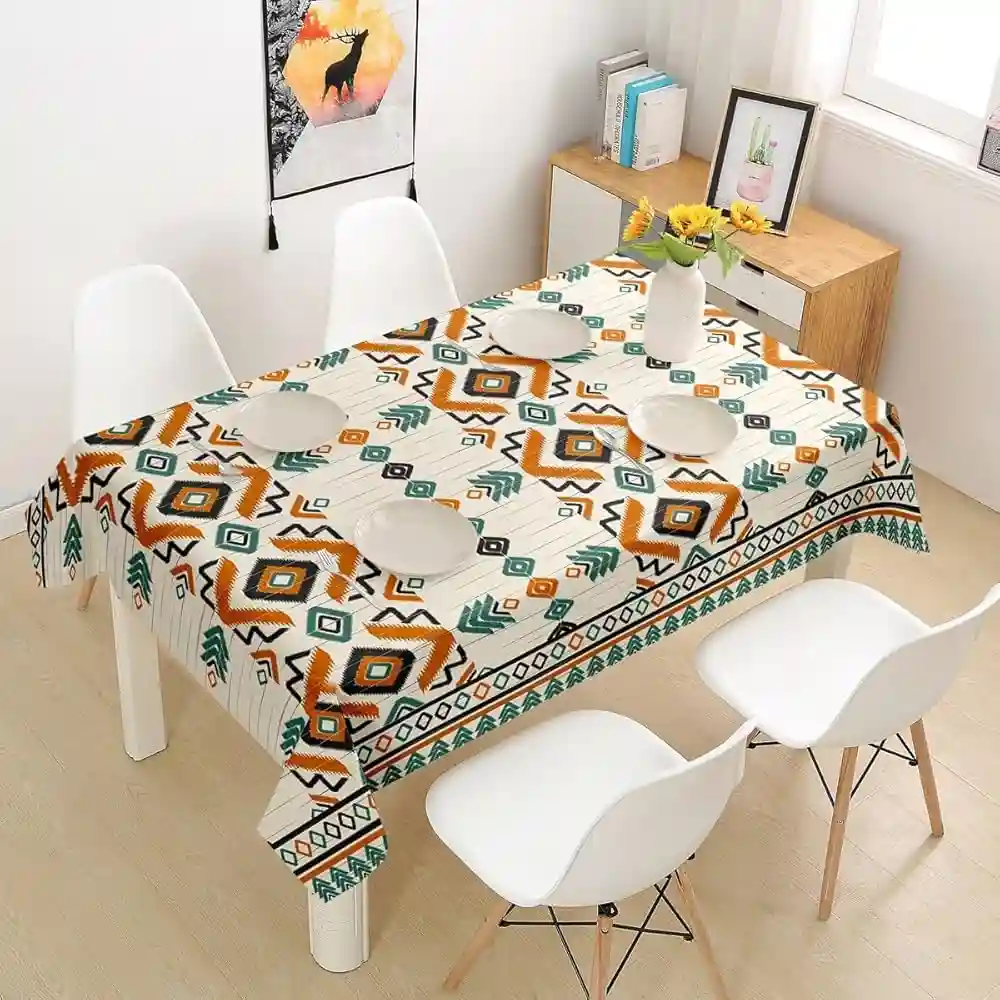When it comes to interior design, the details make all the difference. One often overlooked aspect of furniture design is the edge of tables. Patterns for the edge of tables can transform an ordinary piece into a stunning focal point. This article explores various patterns, techniques, and considerations for adding flair to your table edges.
Why Focus on Table Edge Patterns?
Before diving into specific patterns for the edge of tables, let’s consider why these details matter:
- They add visual interest to your furniture
- Edge patterns can complement your overall decor style
- Well-designed edges enhance the perceived value of your tables
- Unique patterns make your furniture stand out
- Edge treatments can protect the table from wear and tear
Popular Patterns for the Edge of Tables
1. Classic Ogee Edge
The ogee edge features a graceful S-shaped curve, combining concave and convex lines. This timeless pattern works well with both traditional and contemporary styles.
Key features:
- Elegant and sophisticated look
- Softens the table’s appearance
- Complements various table shapes
2. Bullnose Edge
A bullnose edge creates a smooth, rounded profile that’s both attractive and practical. This pattern for the edge of tables offers a safe option for homes with children.
Benefits:
- Eliminates sharp corners
- Easy to clean and maintain
- Provides a modern, streamlined appearance
3. Beveled Edge
Beveled edges feature an angled cut that creates a sloping surface. This pattern for the edge of tables adds a touch of refinement to any piece.
Characteristics:
- Creates interesting light reflections
- Reduces the visual weight of thick tabletops
- Offers a customizable angle for varied effects
4. Waterfall Edge
The waterfall edge seamlessly continues the tabletop material down the sides, creating a sleek, continuous look. This modern pattern for the edge of tables works exceptionally well with natural stone or wood.
Advantages:
- Showcases the beauty of the material
- Creates a dramatic, high-end appearance
- Works well for kitchen islands and dining tables
5. Rope Edge
A rope edge pattern adds a decorative twisted rope design along the table’s perimeter. This intricate detail brings a touch of nautical or rustic charm.
Style notes:
- Perfect for coastal or country-inspired interiors
- Adds texture and visual interest
- Can be combined with other edge treatments
Choosing the Right Pattern for Your Table Edge
Selecting the ideal pattern for the edge of tables depends on various factors. Consider the following when making your choice:
- Table style: Ensure the edge pattern complements the overall design of your table.
- Room decor: Choose a pattern that harmonizes with your existing interior elements.
- Functionality: Consider how the edge will affect the table’s use and maintenance.
- Material: Some patterns work better with specific materials like wood, glass, or stone.
- Personal preference: Ultimately, select a pattern that resonates with your taste and style.
DIY Patterns for the Edge of Tables
For the crafty homeowner, creating your own patterns for the edge of tables can be a rewarding project. Here are some DIY ideas:
Wood Burning Technique
Use a wood-burning tool to create intricate patterns along the edge of wooden tables.
Steps:
- Sketch your design lightly with a pencil
- Practice on scrap wood first
- Slowly trace your pattern with the wood-burning tool
- Sand lightly to smooth any rough edges
- Apply a clear protective finish
Mosaic Edge
Add a colorful mosaic pattern to your table edge using small tiles or glass pieces.
Materials needed:
- Colorful tiles or glass pieces
- Tile adhesive
- Grout
- Sponge and cloth for cleaning
Painted Edge Designs
Create unique patterns for the edge of tables using paint and stencils.
Tips:
- Use painter’s tape to create clean lines
- Experiment with different brush techniques for varied effects
- Apply a clear sealant to protect your painted design
Professional Techniques for Table Edge Patterns
While DIY projects can yield great results, professional woodworkers and craftsmen use specialized techniques to create stunning patterns for the edge of tables.
CNC Routing
Computer Numerical Control (CNC) routing allows for precise, intricate patterns to be carved into table edges.
Benefits of CNC routing:
- Highly accurate and repeatable designs
- Ability to create complex patterns
- Saves time on large-scale projects
Inlay Work
Inlay techniques involve embedding contrasting materials into the table edge to create decorative patterns.
Popular inlay materials:
- Mother of pearl
- Exotic woods
- Metals like brass or copper
- Colored resins
Laser Engraving
Laser engraving technology can produce incredibly detailed patterns for the edge of tables.
Advantages:
- Works on various materials including wood, acrylic, and some metals
- Allows for photorealistic designs
- Offers precise depth control
Maintaining Patterns on Table Edges
Once you’ve chosen and implemented a pattern for your table edge, proper maintenance ensures its longevity:
- Regular cleaning: Dust and wipe down the edge pattern frequently to prevent dirt buildup.
- Gentle products: Use mild cleaning solutions that won’t damage the pattern or finish.
- Avoid moisture: Protect wood edges from water damage by wiping up spills immediately.
- Refinishing: Periodically refinish wooden edges to maintain their appearance and protect the pattern.
- Professional care: For intricate or delicate patterns, consider professional cleaning and maintenance services.
Trends in Patterns for the Edge of Tables
Stay up-to-date with the latest trends in table edge designs:
Mixed Materials
Combining different materials in edge patterns creates unique, eye-catching designs.
Trending combinations:
- Wood and metal inlays
- Stone and glass accents
- Resin with embedded natural elements
Asymmetrical Patterns
Breaking away from traditional symmetrical designs, asymmetrical patterns for the edge of tables offer a modern, artistic touch.
Textured Edges
Incorporating texture into table edge patterns adds depth and tactile interest to furniture pieces.
Popular textures:
- Hammered metal
- Rough-hewn wood
- Embossed patterns
Illuminated Edges
Integrating LED lighting into table edges creates a stunning visual effect, especially for glass or translucent materials.
Environmental Considerations
When choosing patterns for the edge of tables, consider the environmental impact:
- Opt for sustainably sourced materials
- Use low-VOC finishes and adhesives
- Consider upcycling or repurposing existing furniture
- Choose durable designs that won’t need frequent replacement
Cultural Influences on Table Edge Patterns
Patterns for the edge of tables often reflect cultural heritage and traditions:
Asian-Inspired Edges
Incorporate elements like bamboo-style ridges or traditional Chinese cloud patterns.
Scandinavian Simplicity
Clean lines and minimalist edge treatments reflect Nordic design principles.
Moroccan Flair
Intricate geometric patterns and mosaic-style edges bring a touch of North African aesthetics.
Customizing Patterns for the Edge of Tables
Make your furniture truly unique by personalizing edge patterns:
- Incorporate family crests or monograms
- Create patterns that tell a story or represent personal interests
- Use edge patterns to complement specific room themes
The Future of Table Edge Design
As technology and design trends evolve, so do patterns for the edge of tables:
3D Printed Edges
Advancements in 3D printing allow for complex, customizable edge patterns.
Smart Table Edges
Integrate technology into table edges for added functionality, such as wireless charging or touch-sensitive controls.
Eco-Friendly Materials
Look for innovative, sustainable materials for creating unique edge patterns, such as recycled plastics or bio-based composites.
Conclusion
Patterns for the edge of tables offer endless possibilities for enhancing your furniture and living spaces. Whether you prefer classic designs, modern aesthetics, or unique custom creations, there’s a table edge pattern to suit every style and need. By considering factors like material, function, and personal taste, you can select or create the perfect edge pattern to elevate your tables from ordinary to extraordinary. It’s an opportunity to express your creativity and add that finishing touch to your interior design. So next time you’re shopping for a new table or looking to update your existing furniture, pay special attention to the patterns for the edge of tables. It might just be the detail that transforms your space into something truly remarkable.





